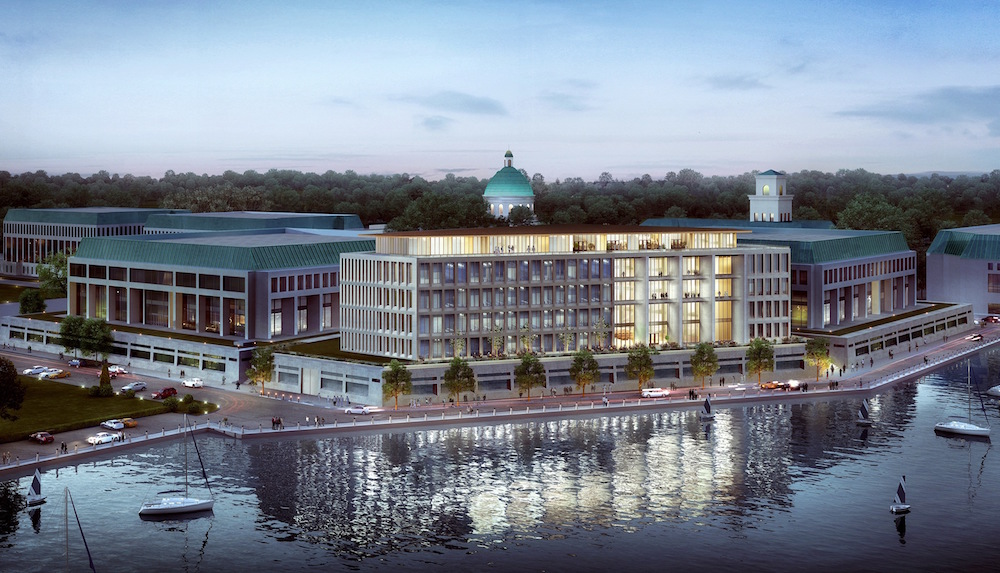Contractors need to be nimble enough to position themselves for whatever the market yields. “We want to be a ‘must consider’ for every project, and to be that, we must constantly improve,” says Pat Di Filippo, Executive Vice President of Turner’s Northeast region.
For the past several years, design-build has accounted for 10–15% of Turner’s work. “If you’re going to do design-build, you have to be able to drive the design,” Di Filippo says. The company is also pursuing projects more aggressively via public-private partnerships.
Last year, the company launched Turner Engineering Group, which now has 16 experts. Di Filippo, who leads the group, says there is “a tremendous thirst” for TEG’s services throughout the company. Its services have been expanded to include design peer review.
One recent project where TEG is providing services is the $114 million Center for Cyber Security Studies at the U.S. Naval Academy, which the design-build team of Turner and Skidmore, Owings & Merrill has been selected to deliver. The 206,400-sf facility will include a research and testing tank to support its engineering and weapons labs, an observatory, offices, and collaborative spaces for students and faculty.
Turner also has been cultivating its self-perform capabilities, such as concrete pouring. Last year, it hired nine regional Lean practice managers to streamline construction and reduce costs.
Making Turner a Lean practices company is a work in progress. “But the results are moving in the right direction,” Di Filippo says.
He is cautiously optimistic about business, especially in New York City, where several mega-projects are in the works. “We’re geared up for opportunities,” he says.
RETURN TO THE GIANTS 300 LANDING PAGE
Related Stories
Healthcare Facilities | May 27, 2015
Rochester, Minn., looks to escape Twin Cities’ shadow with $6.5 billion biotech development
The 20-year plan would also be a boon to Mayo Clinic, this city’s best-known address.
BIM and Information Technology | May 21, 2015
How AEC firms should approach BIM training
CASE Founding Partner Steve Sanderson talks about the current state of software training in the AEC industry and common pitfalls in AEC training.
Architects | May 20, 2015
Architecture billings remain stuck in winter slowdown
Regional business conditions continue to thrive in the South and West
University Buildings | May 19, 2015
Special Report: How your firm can help struggling colleges and universities meet their building project goals
Building Teams that want to succeed in the higher education market have to help their clients find new funding sources, control costs, and provide the maximum value for every dollar.
University Buildings | May 19, 2015
Renovate or build new: How to resolve the eternal question
With capital budgets strained, renovation may be an increasingly attractive money-saving option for many college and universities.
University Buildings | May 19, 2015
KU Jayhawks take a gander at a P3 development
The P3 concept is getting a tryout at the University of Kansas, where state funding for construction has fallen from 20% of project costs to about 11% over the last 10 years.
Retail Centers | May 18, 2015
ULI forecast sees clear skies for real estate over next three years
With asset availability declining in several sectors, rents and transactions should rise.
Contractors | May 18, 2015
Gilbane foresees double-digit growth in construction spending in 2015
In its Spring outlook, the construction company frets about hiring patterns that aren’t fully taking a project’s workload into account.
Architects | May 10, 2015
Harness the connection between managing risk and increasing profitability, Part 2
In Part 1, we covered taking control of the submittals schedule and managing RFIs. Let’s move on to properly allocating substitutions and limiting change orders.
Contractors | May 8, 2015
Trends in U.S. commercial building size in three charts
A new study by the U.S. Energy Information Administration shows that there were 5.6 million commercial buildings in the U.S. in 2012, totaling 87 billion sf of floor space. This is a 14% increase in floor space since 2003.















